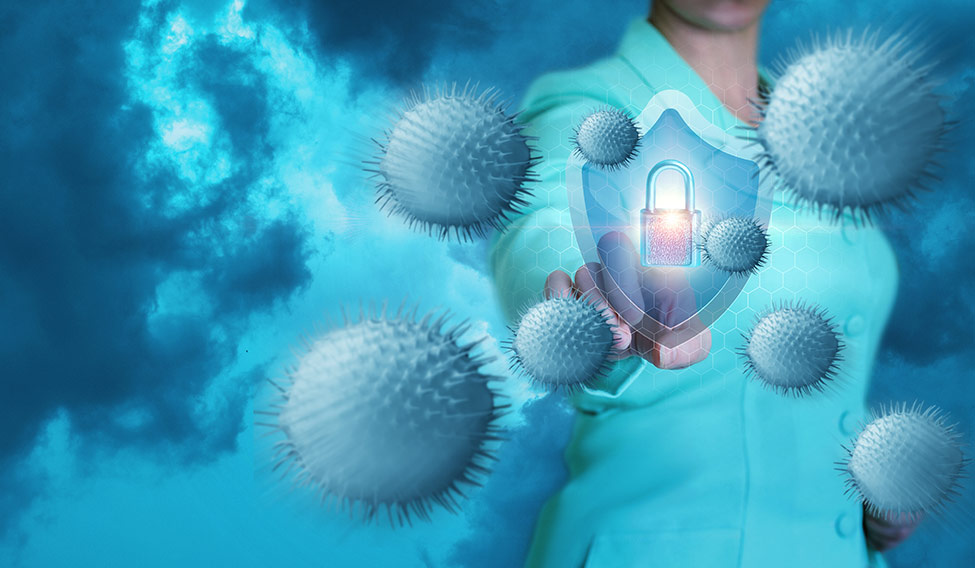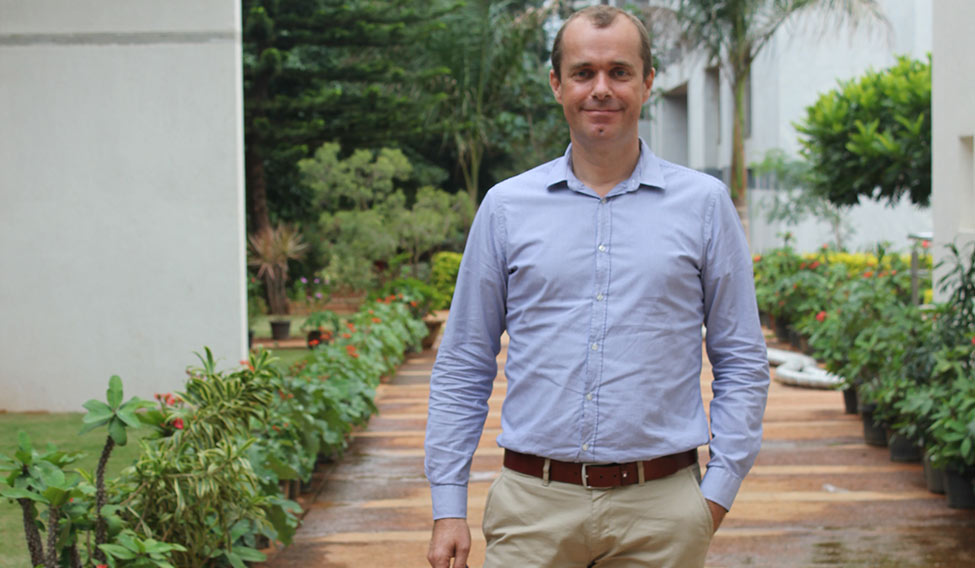Till T. Bachmann, deputy head of the division of infection and pathway medicine and reader in personalised medicine in infectious diseases at the Edinburgh Medical School, is committed to developing tools that can get diagnostic tests done in less than an hour. Novel diagnostics can help prevent misuse of antibiotics to a great extent, says Bachmann. Excerpts from an interview:
Why do microbes develop resistance?
In simple words, when we use antibiotics to kill bacteria to cure an infection, these bacteria can develop resistance to survive the treatment. It is a natural phenomenon. The microbes that have resistance to the treatment have the biggest chance to survive.
India apparently has a high prevalence of gram-negative bacteria. Does that mean there is a higher risk of antibiotic resistance?
Absolutely. There are two major classes of bacteria—gram-negative and gram-positive. In India, the main issue is with gram-negative bacteria. These can have very high rates of resistance. It poses a huge health risk and there are a lot of infections.
What brought you to India?
Antibiotic resistance is a global problem that has no borders. It travels and we need to work together to combat that. To tackle antibiotic resistance, we need to have international collaboration. And hence, we are collaborating with India.
C-CAMP [Centre for Cellular and Molecular Platforms] in Bengaluru is a hotspot for innovation and hence we are here to collaborate.
Besides all problems, antimicrobial resistance (AMR) is also a huge opportunity for innovation, businesses and economic development.
As a researcher, what aspects of antibiotic resistance do you focus on?
I work as a biomedical researcher with infectious disease clinicians and with clinical microbiologists at Edinburgh Medical School and the National Health Service. I am interested in developing tools for rapid diagnostics to achieve quicker care. Today, a sample which is taken from the patient—for example, urine or blood—needs to be taken into the lab, get analysed and then the information goes back to the doctor. Meanwhile, the doctor has to start treating the patient. This process takes too long. We are looking into technologies to speed this up. Our aim is to have a test done in 20 minutes. We are trying to develop rapid point-of-care detection of antibiotic resistance.
We do a lot of research in the area of gram-negative bacteria, too. One of our interests is specifically in urinary tract infections. We are interested in detecting the bacteria, detecting if they are resistant and how they respond to antibiotic therapies.

How can we overcome antimicrobial resistance?
Today we are misusing antibiotics. We use them too often and in wrong situations. Patients are driving this from two sides. They demand antibiotics from the doctor or they go and buy them over the counter. Specifically, that is a problem in India.
Secondly, there is an inherent lack of available diagnostics. When a patient sees a doctor, the decision to prescribe antibiotics or not needs to be made quickly. How long does a patient see a doctor? Usually, just a few minutes. And it might take several days to get the diagnostic report, even if the patient gets the test done immediately.
Use antibiotics only when they are needed and in the appropriate amount and duration. Inappropriate antibiotic therapy may escalate into a situation where there is a serious threat to your life. Let's take the example of urinary tract infection, a very common infection. Usually, the treatment of this is done empirically, that is by trial and error. The doctor chooses an antibiotic. If it works for the patient, it is fine. If it doesn't, then probably because the patient has a resistant organism. Then after a week or so, the patient is given another antibiotic. This may go on for a long time. The problem is that urinary tract infections initially may not seem life threatening, but the bacteria infecting the urinary tract may get into the blood stream and cause sepsis. It is a serious issue and is life threatening.
In sepsis, there is a famous figure. It says, from the onset of septic shock, every hour of inappropriate antibiotic therapy means loss of 7 per cent of patients.
The other area is respiratory tract infections. Here again, it is not immediately life threatening. But it is a very common infection. From the human side, the biggest consumption of antibiotics is in primary care and for respiratory tract infections. The community doctors in primary care do not have a way to discriminate or identify the microbe that causes the infection. It may be bacterial or viral. Regardless, many doctors prescribe antibiotics, even though they are viral infections. Respiratory tract infections can develop into more serious conditions like pneumonia. If you are on ventilator, you may get something called ventilator-associated pneumonia. Again, this easily leads to death.
Now, we and others are developing novel diagnostics that can tell within an hour if antibiotics are needed and, if needed, which ones should be used.
Using the old antibiotics over and over again makes the problem of resistance worse. We need new antibiotics and new ways of using the old ones we have.
New antibiotics will most likely work initially and not be impacted by antibiotic resistance. But as we keep using them, resistance will definitely occur again. So, we need to be very careful where we use novel antibiotics and in which situation.
How far do the antibiotics used in the veterinary sector cause resistance to be transferred to the humans?
A lot of antibiotics are used in the veterinary sector. A large number of them are used for prevention of infections among animals. Many researchers are looking into the transfer of resistance from animals to humans and from humans to animals and we are still learning to understand this field. However, the simple fact that we use so many antibiotics in the veterinary field causes a risk in itself, that resistance will be transferred to humans. We must keep this in mind.
We have a lot of antibiotics in the environment as well. This happens just as we use antibiotics and excrete them again, throw away unwanted antibiotics or during production. This is causing antibacterial resistance in the environment. However, we must also remember that antibiotics were invented by bacteria to fight each other. This bacterial warfare is happening in the environment for much longer than humans used antibiotics.
Could you elaborate on how antimicrobial resistance turns life threatening?
In the UK, the O’Neill Commission undertook an independent review on antimicrobial resistance. They say that if antimicrobial resistance is not targeted, by 2050 we may have 10 million deaths every year. It is a huge number, larger than deaths from cancer today. All over the world, cancer is a big problem. Antimicrobial resistance can become a much larger problem. Also, its impact on the world economy is anticipated to be huge.
An example where AMR can become a dangerous health threat is diabetes. In countries like India, the number of people with diabetes is increasing at an alarming rate. Diabetes can cause foot ulcers, which can cause amputations or death. If you have resistant bacteria in the wound, it can be a huge issue. It is important to have diagnostics that can tell us whether there are bacteria, do they infect and if they infect, what do we use to kill them.
Also, bacteria causing sexually transmitted diseases like gonorrhoea are becoming increasingly drug resistant. We are getting to a situation where no antibiotics can be used anymore for these diseases.
Do antibiotics have long-term side effects? Can resistance surface at a later time?
Yes. If you had to have a surgery, for instance, hip replacement, the prior use of antibiotics is a major risk factor to get complications after the surgery. Those antibiotics could have been used long time before the surgery, for example, for respiratory tract infections or urinary tract infections. It is a big issue. So, patients are encouraged not to use antibiotics unless they are really needed.
How can we combat antibiotic resistance?
Doctors are encouraged to use antibiotics more appropriately. It is called antibiotic stewardship. It means they are prescribed only when they are needed and in the right amount and duration. Another way is delayed prescription. For instance, some of these respiratory tract infections [are] not immediately life threatening and you monitor the patient and you delay the prescription of an antibiotic. The patient may be cured without the antibiotic. Then you can save the patient from the use of antibiotics.
Infection prevention and control is another way to target antibiotic resistance. If you don't have an infection, you don't need an antibiotic. And if you prevent the infection, you don't need the antibiotic.
Hygiene is a big tool to prevent antibiotic resistance.







